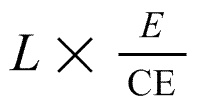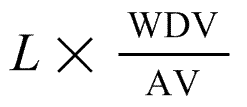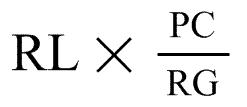Part 8U.K.Intangible fixed assets
Modifications etc. (not altering text)
C1Pt. 8 modified (1.1.2010) by Northern Rock plc (Tax Consequences) Regulations 2009 (S.I. 2009/3227), regs. 1, 6(1)
C2Pt. 8 modified (with effect in accordance with s. 1184(1) of the amending Act) by Corporation Tax Act 2010 (c. 4), ss. 601, 1184(1) (with Sch. 2)
C3Pt. 8 modified (1.10.2011) by Postal Services Act 2011 (c. 5), s. 93(2)(3), Sch. 2 para. 6(1); S.I. 2011/2329, art. 3
C4Pt. 8 modified (15.11.2011 for specified purposes, 30.3.2012 for E.W.) by Localism Act 2011 (c. 20), ss., 240(5)(o), Sch. 24 para. 1(3); S.I. 2012/628, art. 3(b)
C5Pt. 8 modified (1.4.2012) by Budget Responsibility and National Audit Act 2011 (c. 4), s. 29, Sch. 4 para. 3(1); S.I. 2011/2576, art. 5
C6Pt. 8 modified (with effect in accordance with s. 148 of the amending Act) by Finance Act 2012 (c. 14), s. 88(1)(2)(7) (with s. 147, Sch. 17)
C7Pt. 8 modified (6.4.2020) by Finance Act 2019 (c. 1), Sch. 5 paras. 35, 45 (with Sch. 5 para. 36)
Chapter 3U.K.Debits in respect of intangible fixed assets
726IntroductionU.K.
(1)This Chapter provides for debits to be brought into account by a company for tax purposes in respect of—
(a)expenditure on an intangible fixed asset that is written off for accounting purposes as it is incurred (see section 728),
(b)writing down the capitalised cost of an intangible fixed asset—
(i)on an accounting basis (see section 729), or
(ii)on a fixed-rate basis (see sections 730 and 731), and
(c)the reversal of a previous accounting gain in respect of an intangible fixed asset (see section 732).
(2)This Chapter does not apply in relation to amounts brought into account in connection with the realisation of an intangible fixed asset within the meaning of Chapter 4 (see section 734).
(3)For the rules about those amounts, see that Chapter.
727References to expenditure on an assetU.K.
(1)References in this Part to expenditure on an asset are to any expenditure (including abortive expenditure)—
(a)for the purpose of acquiring or creating, or establishing title to, the asset,
(b)by way of royalty in respect of the use of the asset, or
(c)for the purpose of maintaining, preserving or enhancing, or defending title to, the asset.
(2)No account may be taken of capital expenditure on tangible assets in determining for the purposes of this Part the amount of expenditure on an intangible asset.
(3)In subsection (2) “capital expenditure” has the same meaning as in CAA 2001.
(4)If expenditure is incurred partly as mentioned in subsection (1) or (2) and partly otherwise, any necessary apportionment must be made on a just and reasonable basis.
728Expenditure written off as it is incurredU.K.
(1)If in a period of account expenditure on an intangible fixed asset is recognised in determining a company's profit or loss, a corresponding debit must be brought into account for tax purposes.
(2)The amount of the debit recognised for tax purposes is the same as the amount of the loss recognised by the company for accounting purposes.
(3)Subsection (2) is subject to any adjustments required by this Part or [F1Part 4 of TIOPA 2010] (provision not at arm's length).
(4)This section does not apply if the loss represents previously capitalised expenditure.
(5)Nothing in section 59 (patent royalties) prevents a debit from being brought into account in accordance with this section, and so given effect under Chapter 6 of this Part.
Textual Amendments
F1Words in s. 728(3) substituted (with effect in accordance with s. 381(1) of the amending Act) by Taxation (International and Other Provisions) Act 2010 (c. 8), s. 381(1), Sch. 8 para. 145(1), (2) (with Sch. 9 paras. 1-9, 22)
729Writing down on accounting basisU.K.
(1)If in a period of account a loss is recognised in determining a company's profit or loss in respect of capitalised expenditure on an intangible fixed asset—
(a)by way of amortisation, or
(b)as a result of an impairment review,
a corresponding debit must be brought into account for tax purposes.
(2)The reference in subsection (1) to an “impairment review” does not include the valuation of an asset for the purpose of determining the amount of expenditure to be capitalised in the first place.
(3)In the period of account in which expenditure on an asset is capitalised the amount of the debit for tax purposes in respect of the expenditure is—
where—
L is the amount of the loss recognised for accounting purposes,
E is the amount of expenditure on the asset that is recognised for tax purposes, and
CE is the amount capitalised in respect of expenditure on the asset.
(4)For the purposes of subsection (3), subject to any adjustments required by this Part or [F2Part 4 of TIOPA 2010] (provision not at arm's length), the amount of expenditure on the asset that is recognised for tax purposes is the same as the amount of expenditure on the asset capitalised by the company.
(5)In a subsequent period of account the amount of the debit for tax purposes in respect of the expenditure on an asset is—
where—
L is the amount of the loss recognised for accounting purposes,
WDV is the tax written-down value of the asset (see section 742) immediately before the amortisation charge is made or, as the case may be, the impairment loss is recognised for accounting purposes, and
AV is the value of the asset recognised for accounting purposes immediately before the amortisation charge or, as the case may be, the impairment review.
(6)In this section “capitalised” means capitalised for accounting purposes.
(7)This section does not apply to an asset in respect of which an election is made under section 730.
Textual Amendments
F2Words in s. 729(4) substituted (with effect in accordance with s. 381(1) of the amending Act) by Taxation (International and Other Provisions) Act 2010 (c. 8), s. 381(1), Sch. 8 para. 145(1), (2) (with Sch. 9 paras. 1-9, 22)
730Writing down at fixed rate: election for fixed-rate basisU.K.
(1)A company may elect to write down the cost of an intangible fixed asset for tax purposes at a fixed rate.
(2)The election may be made whether or not the asset is written down for accounting purposes.
(3)The election may only be made—
(a)in writing,
(b)to an officer of Revenue and Customs, and
(c)not later than 2 years after the end of the accounting period in which the asset is created or acquired by the company.
(4)The election applies to all expenditure on the asset that is capitalised for accounting purposes.
(5)The election is irrevocable.
731Writing down at fixed rate: calculationU.K.
(1)If an election is made under section 730 for writing down at a fixed rate, a debit equal to the lesser of—
(a)4% of the cost of the asset, and
(b)the balance of the tax written-down value,
must be brought into account for tax purposes in each accounting period beginning with that in which the relevant expenditure is incurred.
(2)If the accounting period is less than 12 months, the amount mentioned in subsection (1)(a) must be proportionately reduced.
(3)In this section “the cost of the asset” means the cost recognised for tax purposes.
(4)The cost of the asset recognised for tax purposes is the same as the amount capitalised for accounting purposes in respect of expenditure on the asset.
(5)Subsection (4) is subject to any adjustments required by this Part or [F3Part 4 of TIOPA 2010] (provision not at arm's length).
(6)If there is a part realisation of the asset (see section 734(4)), the reference in subsection (1)(a) to the cost of the asset must be read as a reference to the sum of—
(a)the cost recognised for tax purposes in respect of the value of the asset recognised for accounting purposes immediately after the part realisation, and
(b)the cost recognised for tax purposes of any subsequent expenditure on the asset that is capitalised for accounting purposes.
(7)If there is a further part realisation, subsection (6) applies again.
Textual Amendments
F3Words in s. 731(5) substituted (with effect in accordance with s. 381(1) of the amending Act) by Taxation (International and Other Provisions) Act 2010 (c. 8), s. 381(1), Sch. 8 para. 145(1), (2) (with Sch. 9 paras. 1-9, 22)
732Reversal of previous accounting gainU.K.
(1)This section applies if—
(a)in a period of account a loss is recognised in determining a company's profit or loss (“the recognised loss”),
(b)the loss wholly or partly reverses a gain recognised in a previous period of account (“the reversed gain”), and
(c)a credit was brought into account for tax purposes under Chapter 2 (credits in respect of intangible fixed assets) in respect of that gain (“the previous credit”).
(2)A corresponding debit must be brought into account for tax purposes.
(3)The amount of that debit is—
where—
RL is the recognised loss,
PC is the previous credit, and
RG is the reversed gain.
(4)References in this section to the recognition of a loss that reverses a gain recognised in a previous period of account do not include a loss recognised—
(a)by way of amortisation of an asset that has previously been the subject of a revaluation, or
(b)as a result of an impairment review of such an asset.
(5)In subsection (4) “revaluation” has the same meaning as in section 723 (see subsection (5) of that section).


